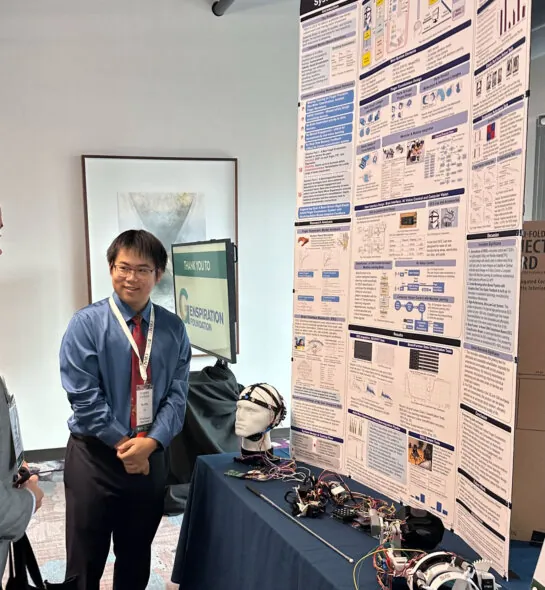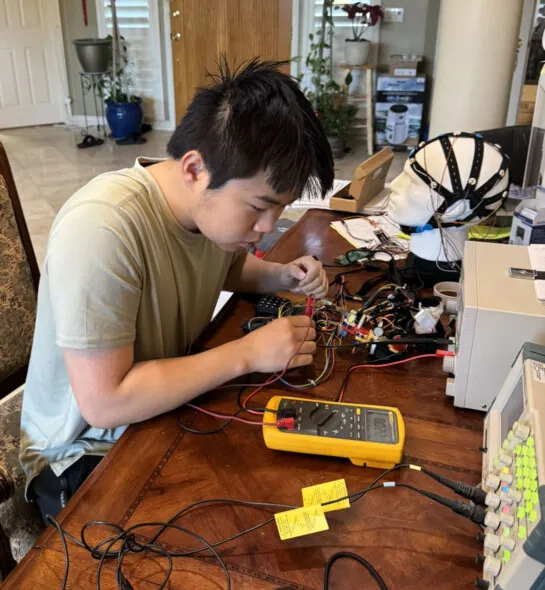Deeper Dive
My project focuses on developing a brain-controlled exoskeleton system to assist patients with motor impairments. Combining brain-computer interfaces (BCIs), EEG-based neuroregulation, haptic feedback, and rehabilitative functions, the system aims to restore independence while reducing rehabilitation costs.
I first drew inspiration for this project while volunteering at a senior center, where I saw many seniors, especially stroke patients struggling with severe hand impairments. Building a fully functional prototype required overcoming steep technical challenges, from signal noise in EEG data to designing safe and reliable mechanical systems. My school’s science teachers provided guidance and encouraged me to explore interdisciplinary topics.
I see my work as part of a larger mission: making assistive healthcare technologies more affordable and accessible. Stroke is one of the leading causes of motor impairment, yet rehabilitation solutions are often prohibitively expensive and inaccessible to underserved populations. By integrating cost-effective materials and scalable designs, I hope my project will lay the groundwork for technologies that improve rehabilitation outcomes, bridge gaps in healthcare equity, and enhance quality of life for millions worldwide.



